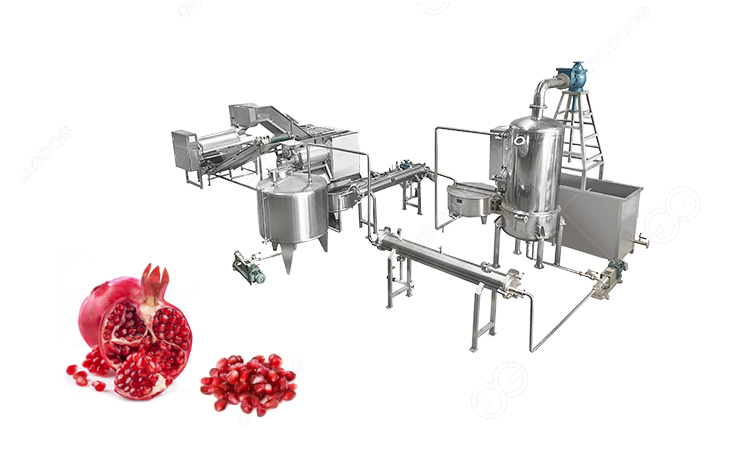Pomegranate juice, with its rich flavor and numerous health benefits, has become a popular beverage around the world. The journey of pomegranate juice from orchard to bottle involves a meticulous and sophisticated process carried out in specialized factories. let’s talk how is pomegranate juice processed.

Harvesting and Transporting:
The journey begins in the pomegranate orchards, where ripe fruits are carefully harvested to ensure peak flavor and nutritional content. The harvested fruits are then transported to the processing facility, where the transformation into refreshing juice begins.
Cleaning and Sorting:
Upon arrival at the factory, the pomegranates undergo a thorough cleaning process to remove dirt, debris, and any pesticides that might be present on the fruit’s surface. The cleaned fruits are then sorted to eliminate damaged or unripe ones, ensuring that only the highest-quality pomegranates move forward in the processing chain.
Peeling and Seed Extraction:
The next step involves peeling the pomegranates to access the seeds, also known as arils. Different techniques, such as water submersion or mechanical peeling, may be employed. Once peeled, the arils are separated from the membrane and collected for further processing. This step is crucial in obtaining the purest form of juice without bitter undertones from the peel.
Screening:
To remove any remaining pieces of membrane or unwanted particles, the arils undergo a screening process. This step ensures that only the pristine, jewel-like arils proceed to the juice extraction phase.
Juice Pressing:
With the cleaned and screened arils ready, the juice extraction process begins. Mechanical presses or centrifuges are commonly used to gently extract the juice from the arils without compromising its quality. This method minimizes the inclusion of bitter compounds found in the peel, resulting in a sweeter and more palatable juice.
Filtration:
The freshly extracted juice may still contain fine particles and pulp, necessitating filtration. Filtration systems, such as mesh screens or specialized filters, are employed to remove impurities and achieve the desired clarity and texture in the final product.
Degassing:
To enhance the shelf life and stability of the juice, degassing is performed to remove excess oxygen. This step prevents oxidation, which can negatively impact the flavor and color of the juice. It also contributes to maintaining the natural freshness of the product.
Sterilization:
Ensuring the safety and longevity of the product, the pomegranate juice undergoes a sterilization process. This step involves heating the juice to eliminate harmful microorganisms while preserving its nutritional content and natural taste. Various techniques, such as pasteurization or flash heating, may be employed.
The journey from orchard to bottle transforms fresh pomegranates into the delightful and nutritious beverage that so many enjoy. The meticulous steps involved in processing, including cleaning, peeling, screening, juice pressing, filtering, degassing, and sterilization, contribute to the production of high-quality pomegranate juice that captures the essence of this remarkable fruit. And all the process completed by the pomegranate juice production line, if you are interested, contact us.